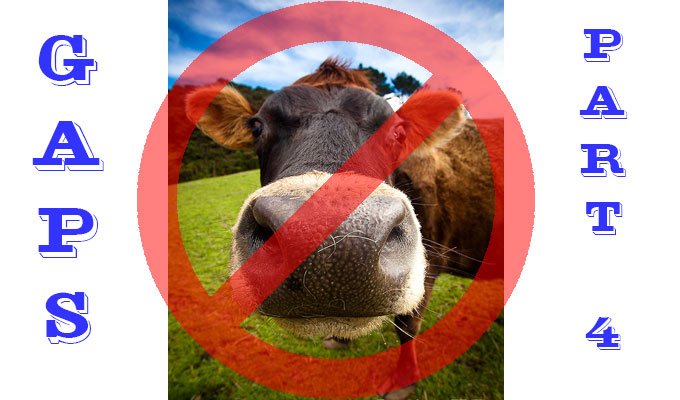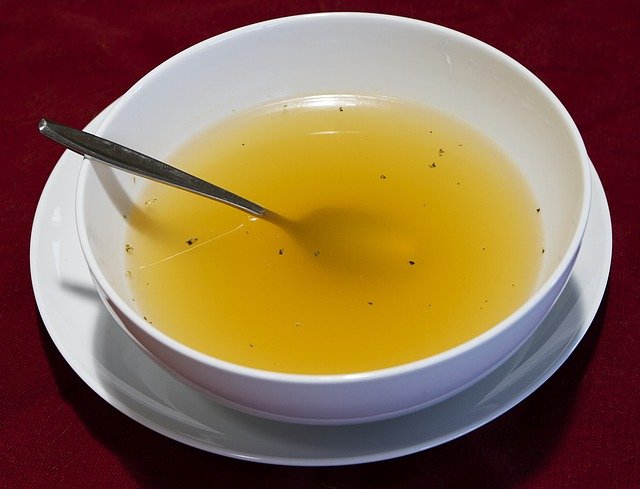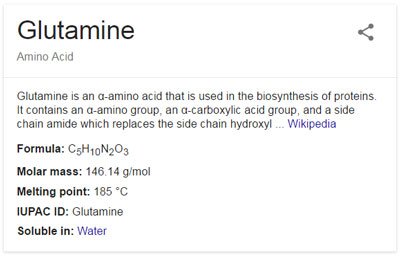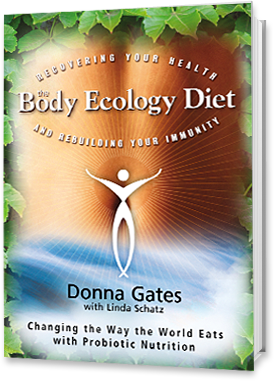Can we heal the gut, and the subsequent chronic illnesses, with limited (or no) animal foods?
This isn’t what I planned for part 4 – I was going to give you a bunch of menu ideas. But after Steemit chatting with another member who can’t eat animal foods, I see there is a need for this post first.
To catch up with previous posts:
Part 1 – About the Gut & Psychology Syndrome diet
Part 2 – Foods we can’t have
Part 3 – Foods we CAN have

OK, so we have different strategies depending what you can or can’t eat.
Dairy
You don’t have to eat dairy to do GAPS, though butter, ghee and fermented products do have beneficial properties. If you eat other animal products, have other animal fats for Vitamins A & D. Sauerkraut or coconut water kefir are other good fermented foods.
As you heal, you MAY be able to add some dairy back in. More about that in Part 7
Eggs
This is inconvenient, as eggs are an easy versatile & nutritious GAPS food. But it’s not insurmountable, you still have plenty of other options, and after some healing, you may be able to have them again.
Fish
If you can’t eat fish, that’s OK, just focus on poultry and red meat.
Meat
If you don’t eat meat, GAPS does become a bit harder, but you can still do GAPS if you can eat:
• Fish
• Fish bone broth
• Eggs
• And maybe some dairy

Bone Broth
Broth, especially bone north, is one of the primary healing foods in GAPS, so is very important. But some people can’t have it for a variety of reasons.
Amine sensitivity
Some people can’t tolerate bone broth to start with, if they are sensitive to amines.
• If you react to bone broth, try starting with a meat stock (which is essentially the gravy you get from stewing up some meat + vegetables + seasoning).
• Start with a teaspoon of meat stock in a cup of hot water and build up.
• Once you are able to tolerate a cup, go on to bone broth.
• Start with a short cooked bone broth + again start with one teaspoon in a cup of hot water, and gradually build up.
If you don’t eat meat or poultry
Fish stock is fine to use
If you’ve been vegetarian or vegan & are struggling to face animal foods (Pun intended)
• Start by using gelatin or collagen hydrolysate (I like the Great Lakes brand)
• Yes, it’s still from animals, but coming in a powdered form may make it easier to transition.
If you react to all animal foods
• This is the situation of the member I was chatting with. She wants to try broth, but can’t.
• So this next suggestion is for you. It isn’t technically GAPS, but it’s another way to address leaky gut.
Using l-glutamine instead of broth

Studies have shown that l-glutamine can help prevent breakdown of the mucosal tissue of the gut, and many health practitioners are recommending it to help with leaky gut.
• First thing is to make sure you choose a pharmaceutical grade product. We’re checking out the Jarrow product at present.
• If you react to animal foods, you don’t know whether you might react to this, so start by buying the smallest (cheapest) quantity you can, either capsules or powder is fine.
• The first time you use it, get the tiniest amount you can (open a capsule if that’s what you bought) and add it to some food you’re eating.
• If you react, put it away in the cupboard and try again when you’ve healed a bit.
• If you don’t, increase the amount the next day.
• A smoothie is the easiest way to take it but it can be sprinkled on other foods.
• Build up till you’re taking about 40g, split into two doses. (unless you start reacting before you get to 40g - in which case, that lower amount is your best dose)
• By this time, you will probably want a larger tub of powder, which will be worth it once you know it works for you.
If you don’t eat animal foods for ethical reasons
I respect that.
I do have some concerns about how healthy it is, though, which I’ll talk about in another post. But essentially, GAPS is not for you. Maybe the Body Ecology diet would be more suitable.

More soon – stay tuned...
For now, I’m expecting the remaining posts to be:
• Part 5 – Menu ideas
• Part 6 – Getting prepared
• Part 7 – Stages of the diet & pulling it all together
Thanks for reading and feel free to ask questions.
Follow me for more nutrition, health, food, lifestyle and recipe posts.
My other nutrition posts:
• The wide variety of so-called healthy diets out there and what the commonality is with them all
• The travels of Weston A Price and his discoveries of what was included in a range of healthy diets.
• Good fats vs bad fats

